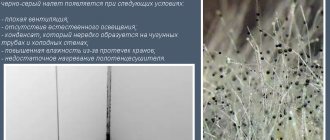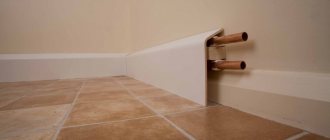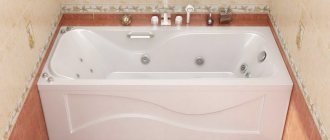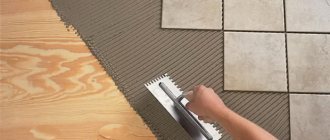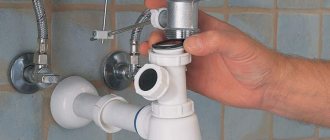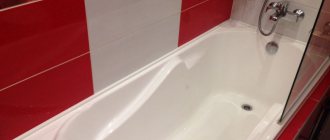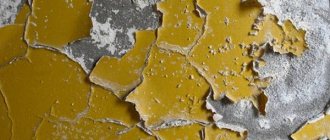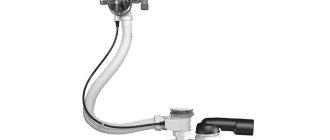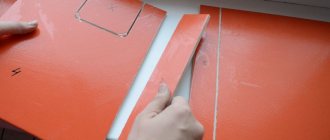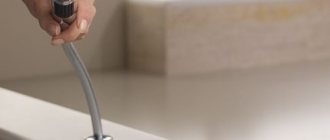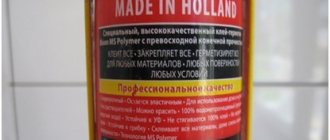Removing silicone sealant from a bathtub without damaging it is not so easy, because the material has good adhesion to various surfaces and is quite difficult to remove.
Silicone sealant can be one-component or two-component. Its main property is due to its resistance to various aggressive environmental influences. Silicone is widely used in construction not only indoors, but also outdoors.
When to delete
- The sealant is not applied correctly, resulting in no protection against moisture penetration. Then the carelessly applied layer is removed, and the seam is filled with sealant again.
- Over time, the sealing layer wears out and deteriorates, and it may change color due to fading or severe contamination. The seam may crack, which will significantly impair its moisture-proof characteristics. The damaged layer must be removed immediately.
- Even if the sealant contains antiseptic additives, during prolonged use in conditions of high humidity, for example, in a bathroom, microorganisms can multiply on the surface, causing mold to quickly appear. The contaminated layer must be removed as quickly as possible, since mold that multiplies in dampness can worsen the well-being of apartment residents.
- During repairs, sealant accidentally ends up on inappropriate surfaces.
What and how to wipe off the sealant
Immediately after application, the substance is difficult to see on the surface, but after a few hours it turns from transparent to white. It becomes clear which surfaces will require removal of splashes, stains or alignment of seams and joints.
Dried or hardened silicone composition can be removed mechanically by scraping with available tools.
The method is used when solvents or detergents cannot be used.
Tools
- Construction spatula. The wide handle makes it easy to use for removing even heavily dried sealant. The edge of the tool must be intact, and if there is a jagged edge, it is useless and even dangerous to use, as there is a possibility of damaging the surface.
- Construction scraper. Helps quickly remove adhesive residues without destroying tiles.
- Razor blade. For the most inaccessible places, small stains are quickly erased. Due to its small size, the blade is not always convenient to use; if handled carelessly, you can cut your hands.
- Shoe knife. Helps remove very thin layers of adhesive.
- Screwdriver. The sealant is removed in hard-to-reach areas. In order not to damage the tiles, you need to work without strong pressure.
- Forceps, tweezers, pliers. Tools can be used to grab loose parts of the sealant if this cannot be done with your fingers.
Special tool. They are a handle with interchangeable attachments of different shapes. Nozzles are selected for any angle and type of surface. It can remove both old waterproofing and seal the seams with a new mixture.
Cleaning procedure
- First, remove the top layer of silicone with a knife or blade. To do this, a longitudinal and transverse cut is made between the treated base and the adjacent seam layer. Slightly hardened waterproofing is cut off with one maximum longitudinal movement.
- If it was not possible to completely remove the silicone in one go, you need to grab the cut edge with your fingers and separate all the pieces one by one.
- Residues are removed with a spatula or scraping tool.
For acrylic surfaces, it is better to use wooden spatulas.
- Old waterproofing is removed from cracks and cracks using plucking tools.
- It is difficult to cut off a thin waterproofing layer; it is usually rubbed off with sandpaper, pumice stone or steel wool for cleaning dishes.
- To clean the embossed surface without damaging it, use a school eraser or pumice stone.
- When dismantling an acrylic bathtub or shower tray, first cut the outer seam around the entire perimeter of the bowl. Then it is pryed off with a screwdriver and slightly loosened. If it does not pry off immediately, continue to cut off the influx with a knife until the bowl is detached from the base.
How to clean tiles
Large remnants of material are cut off from the tiles with a knife. In this case, it is better to use a stationery knife - it is thin and sharp. You need to work carefully so as not to scratch the tile. To soften the residues, you can use any available solvent, after which they can be easily removed with a clean rag.
You can also remove silicone sealant from the tiles that remains after sealing the seams with a wooden or plastic scraper. To soften, you can use kerosene, which is used to rub the surface of the tile until the desired result is obtained. Dish detergent is also suitable for this purpose, but it is not as effective as kerosene or thinner.
The algorithm for cleaning tiles is as follows: a clean cloth is moistened with a solvent, after which the dirty area is wiped. After a few minutes, the softened sealant is removed with a knife or scraper. If a stain remains, wipe it off with a rag soaked in solvent. Wash the cleaned area with a detergent solution.
How to clean silicone sealant with chemicals
The mechanical method cannot completely, so it is often combined with chemical treatment.
The solvent is selected taking into account the composition of the sealant.
- Acid-based substances emit a vinegary odor; they can be removed with an acid-based solvent.
- Neutral silicone adhesives do not have a strong odor and are easily dissolved with gasoline, acetone or other organic solvents.
Household chemicals
A quick way to clean virtually any substrate. Do not use household chemicals to clean rubber and plastics.
Vinegar
Acidic sealants have a characteristic vinegar smell.
A pungent aroma is the main feature of budget sealants.
Their traces are easily removed with vinegar essence (70%). If necessary, the area is treated with vinegar several times.
Work with the essence is carried out with gloves on, with the windows open or forced ventilation turned on.
Alcohol
Alcohol-based sealant can be dissolved with industrial alcohol or ethanol. The compositions act in the same way, first softening the glue and then dissolving it.
To clean surfaces, a clean rag is dipped in alcohol, which is then used to wipe the dried mixture.
Petrol
Gasoline dissolves sanitary sealant and mixtures with a neutral base well. A small rag is soaked in the purified fuel and the dirt is thoroughly wiped off. If necessary, the processing is repeated. The dissolved layer is removed with a spatula, and small traces with a stationery eraser.
White spirit, acetone
White spirit or other solvents like acetone can easily remove traces of fast-hardening sealants. Neutral sealants, the main components of which are amines and alcohols, are washed off. They can easily clean any surface without damaging it.
Dip a cotton swab into the solvent and wipe the area. After the product has dried, cleaning is repeated if necessary. When the sealant softens to a mushy mass, it can be easily removed with a kitchen sponge.
White spirit cleans cast iron or enamel bathtubs well, but is ineffective on acrylic surfaces.
Professional solvents
- Tytan (Selena, Poland). Phosphoric acid based sealant solvent, odorless. Can easily dissolve dried silicone. The cleaner operates for 12 hours. It effectively cleans textured substrates, so it is often used to clean tiles with a three-dimensional pattern. The product leaves greasy traces.
- XADO Mottec Antisilicone (Ukraine). All-purpose alcohol-based car cleaner. Used to degrease and clean substrates from traces of tape and sealant. Can be used on ceramic and acrylic materials. Does not require rinsing, no traces remain after treatment.
- Soudal (Belgium). Hydrocarbon based silicone remover. Available in gel form. Easy to apply, has a moderately pungent odor. Begins to act after 10 minutes. Can only be applied to dry substrates. Before using on ceramic, acrylic, plastic and stone substrates, it is better to test the product on an inconspicuous area. After processing it leaves traces of fat.
- Body Antisil 770 (Greece). Car wash, which is available in aerosol form. Cleans any base. Based on organic solvents. Can dissolve various sealants. Stubborn stains may require re-treatment.
- Dow Corning (Dow Sil, USA). Silicone based solvent. Starts the depolymerization process of the sealant. Safe for any surfaces, including painted ones. Does not change the color of the dye, does not leave stains. Available in aerosol or liquid form. The latter is suitable for removing old traces of silicone.
- Penta-840. Cleans waterproofing from tiles, metal and acrylic substrates. A washcloth is used for application. After washing, the surface is covered with oilcloth for several minutes. The softened silicone is removed with a sponge.
Due to prolonged exposure of the remover to the metal, corrosion may begin. Do not allow the product to come into contact with the skin, eyes or respiratory tract.
Material Removal Methods
Since there is no universal means for removing frozen silicone residues, you will have to use a combination of several methods:
- dissolve;
- cut off;
- scrape off;
- rub off;
- wash off.
In any case, all methods can be divided into two groups: mechanical and chemical methods.
Mechanical
Any suitable tools can be used to mechanically remove residues. The glue can be easily removed with a small spatula, a scraper, you can use sandpaper, a shoe or stationery knife, a screwdriver, salt - anything that can handle the sealant.
As practice shows, it is most convenient to cut off protruding beads of silicone with the sharp tip of a shoe knife. A stationery knife can also be used, but it is very fragile and you need to work very carefully.
Regular table salt can be used as an abrasive due to its availability and effectiveness. A pumice stone works well to remove sealant, but you can also use a steel wool scourer, a plastic scraper, or even an old credit card. The main thing is to work carefully and not damage the surface on which the sealant is applied.
The operation algorithm is simple: first you need to remove large excess sealant from the surface to be cleaned with a knife, after which we remove the remaining silicone glue using abrasive substances. If salt is used, apply it to a cloth and lightly moisten it with water. Rub the sealant with gentle circular movements until it is completely removed.
After removing the material, stains may remain on the surface, which can be removed with household dish soap. Glass cleaner also works well.
Chemical
In hardware stores you can find different types of solvents for removing sealant from surfaces. However, you need to immediately clarify that frozen silicone sealant reacts poorly to solvents; with their help, large residues cannot be completely removed, but softening can be done. After this, cleaning the surface will be much easier.
In order to choose the right solvent, you need to know the composition of the sealant that was used. Ideally, you should buy the sealant and the liquid to remove it from the same store. Silicone sealant can be one- or two-component. The two-component product is used mainly in production and is rarely used at home.
One-component sealants are divided into acid-based and neutral-based products. Neutral sealants, in turn, are: alcohol, amide, oxide. Acidic silicone is well softened with concentrated vinegar (at least 70%), alcohol-based sealant can be dissolved with it - technical or medical.
For neutral materials, any household solvent is suitable. There are also chemicals specifically designed for dissolving sealants, for example, Penta-840 or Antisil. They are universal, so if the composition of the sealant is unknown, these chemicals should be used.
Cleaning plastic from sealant
The smooth surface of plastic has low adhesion, so the adhesion of sealants to it will be minimal.
- Large sagging is cut off from the plastic base.
- The remaining stains are softened and removed with a suitable solvent.
If you need to remove a layer from plastic in the bathroom, use a substance that will not damage the bathtub bowl or tray. Before cleaning, the effectiveness and safety of the solvent is tested on an inconspicuous area. Softened residues are removed with a soft abrasive or just a hard sponge. If the removal does not work the first time, all steps are repeated.
Washing from clothes
The easiest way to wash silicone from clothes is immediately after contamination. The uncured mixture is quickly removed from the fabric, the residue is wiped off with a rag, and if necessary, the item is washed. If the product has dried out, follow these steps:
- the item is laid out on a flat surface, the contaminated area is straightened out;
- a thin tool is used to pry up the dried substance and remove it from the material;
- the stain remaining on the clothing is wiped off with a sponge dipped in vinegar or alcohol;
- after a while, the stain is again moistened with solvent and cleaned with an old toothbrush, the pellets that appear are removed manually;
- the applied chemical with silicone is washed off with a warm soapy solution.
Removal from hands
Wash off newly spilled sealant from your hands with hot water and soap.
If it starts to dry out, you can soften it with acetone or gasoline, and then wipe it off with a pumice stone. Effectively removes medical or technical products from the skin. alcohol. The sponge is moistened in it, and the silicone is removed with careful progressive movements.
From organic products you can use sunflower oil. Oil itself does not clean well, so heat it a little in a saucepan and add washing powder. After using the product, wash your hands thoroughly with running water and soap.
Vinegar diluted in water, ratio 1:1, effectively removes silicone. After removal, wash your hands with warm water and laundry soap.
How to remove acrylic sealant
- A fresh layer can be easily removed with a washcloth or rag soaked in water.
- Old marks are first trimmed with a knife or blade.
- If the dried mixture dissolves in water, the residues soften and are removed with a damp cloth.
- You can remove waterproof waterproofing from the edges of an acrylic bathtub with construction foam, acetone, white spirit and other similar solvents.
- The remaining traces are removed with a wooden scraper.
- After acrylic mixtures, no greasy stains remain, so additional treatment with a solvent is not necessary.
How not to spoil the surface
- Cleaning the base with a blade or knife is carried out very carefully to reduce injuries and damage to the surfaces being treated.
- It is better to remove a thin layer of sealant on acrylic bases with an eraser, damp pumice, fine sandpaper or soft wood chips.
- If the silicone is very hardened and cannot be treated by any mechanical means, it is first softened with chemical compounds.
- Do not try to tear off the sealant by force; in some areas it may separate along with the top layer of the bathtub or the tile covering.
- When choosing a thinner, you need to pay attention to the components of the sealant, especially if acrylic is being cleaned. The packaging of the product must contain a list of materials allowed for processing.
Mechanical removal methods
There are many ways to solve this problem, which have been tested by experts in real life. First, you should familiarize yourself with mechanical methods. In the process you will need: a knife, a blade, rags, an eraser.
The most popular method is removal with a razor or a regular blade. It must be sized to completely grip the sealant line and sharpened.
The blade is simply applied to the acrylic surface and guided in the direction of the sealant, thus cutting off excess material.
There is no need to worry about damage to the bathroom, since acrylic, like other materials, is quite resistant to mechanical damage. If scratches appear, they will be almost unnoticeable, but to reduce risks it is better to act cleanly and carefully, and most importantly, slowly .
The knife also acts like a blade, carefully cutting off the remaining material with its sharp part. The main thing is not to take an ordinary table knife, but to use a sharpened stationery or construction knife, since they are most suitable for this task. Residues can be easily removed with a simple eraser.
You should not try to simply peel off the sealant, as this method will lead to serious damage to the acrylic coating. It will simply come off along with the silicone.
How to replace sealant
- The working surface, from which the old sealant has already been removed, is degreased and thoroughly dried. If you apply the mixture to a damp surface, it will adhere less well to the base, and fungus will very quickly begin to develop under the seam.
- The area around the work area is covered with masking tape to prevent splashes from getting on it.
- The tube with sealant is prepared for work in accordance with the instructions.
- The new composition is carefully applied.
- A seam is formed along the entire length of application, and excess product is immediately removed. An even seam is made with a finger, a spatula or an old bank card.
- After application, at least 12-24 hours must pass before use.
Advice from professionals
Experts recommend:
- Before using a chemical, you need to apply it to a small and inconspicuous area of the bath and monitor the reaction of the material to the chemical. This way you can avoid damage to the product.
- When working with sealant, it is advisable to wipe off drips and drips before it hardens.
- Silicone substances have a destructive effect on products made of polyacrylate and polycarbonate. In this regard, it is not prohibited to combine them.
- You should always follow the rules for working with chemicals.
With a competent approach to the procedure, removing the sealant from the bathtub will not be difficult.
Safety precautions
- Work with piercing and cutting tools is carried out using gloves made of thick rubber.
- All cuts are made slowly and carefully, removing the old coating one millimeter at a time.
- When working with aggressive chemicals, acid-resistant construction gloves are worn on your hands.
- Free air circulation is ensured in the room, windows and doors are opened, and artificial ventilation is turned on.
- Protect your eyes from acids and dangerous vapors with plastic goggles.
- A respirator or disposable protective mask will protect against harmful substances entering the respiratory system.
Helpful information
Tips for removing caulk from a bathtub:
Before you begin removing sealant using chemicals, you need to test them on an inconspicuous area. If the coating does not change its properties, you can start cleaning.
- When working with chemicals, you should not forget about your own safety measures. Hands must be protected with gloves. If aerosol cans are used, wear construction goggles over the eyes and a respirator over the respiratory system.
- Immediately after removing the sealant, the treated surface should be rinsed with clean water. If the remover remains on an enamel or acrylic bath for a long time, it will lead to corrosion.
